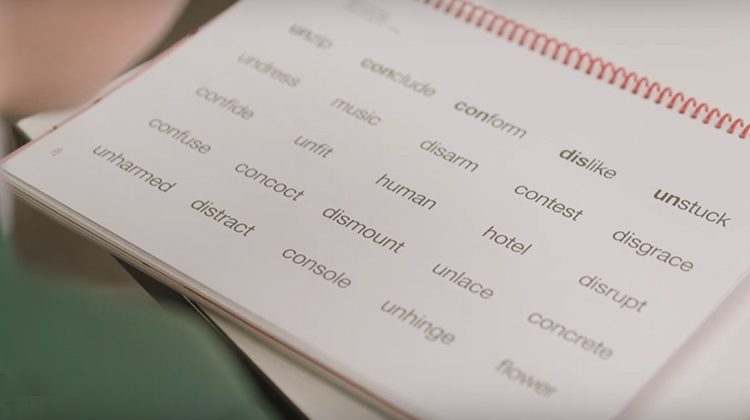New Resources Help High Schoolers Get Up to Speed

A significant number of students make it to high school without having mastered foundational numeracy and literacy skills.
Currently, 1 in 5 students across Australia starts secondary school at or below the minimum standards for literacy and numeracy and these students often become disengaged and fall further behind their peers, making it difficult for them to catch up.
Identifying these students early and providing them with targeted intervention using instruction backed by evidence is key in helping them to acquire the skills they need and school leaders and teachers will be better equipped to support struggling students through new resources released by the Australian Education Research Organisation (AERO).
Developed in partnership with the Dyslexia-SPELD Foundation (DSF), the comprehensive suite of resources is aimed at supporting school leaders and teachers in delivering or enhancing a multi-tiered system of supports (MTSS) for Year 7 to 9 students struggling with literacy and/or numeracy.
“The are many reasons students enter secondary school without the literacy and numeracy skills required for them to fully engage with the secondary curriculum. Some may not have received best-practice instruction in primary school or have experienced interruptions to their schooling. Others may have additional learning needs that may slow or limit their learning, particularly where instruction and support has not been modified to assist them,” says program director at AERO Dan Carr.
Backed by robust evidence, the suite includes seven case studies demonstrating how an MTSS framework has been effectively applied in different settings across Australia.
MTSS has been widely recognised as an effective approach for supporting struggling students by allowing early identification, intervention and the tracking of progress.
“The strength of the MTSS model for delivering support is that it is adaptable to local context. Some schools use teachers or speech therapists, others draw on their teaching assistants. The guidance sets out how to both create a strong team to lead the planning of an MTSS model, as well as how to ensure the staff delivering literacy and numeracy interventions receive appropriate training,” says Carr.
Using a data-driven approach that provides varying levels of instructional support based on student needs, MTSS allows for universal screening of all students, followed by increasing tiers of intervention, as needed.
“A best-practice screening process starts with a universal assessment of students early in the school year to identify those who fall behind minimum benchmarks. For those that do, diagnostic assessments and teacher observations are then used to understand the nature of the skill gap more precisely in order to tailor an intervention. The key thing is to ensure you’re not reliant on an ad hoc approach to screening, as by secondary school, students with significant skill gaps have often developed strategies to avoid drawing attention to the skills they are struggling in,” says Carr.
The evidence for the MTSS model being appropriate for secondary students was demonstrated by a review of evidence-based approaches undertaken for AERO by a team led by Dr Kate de Bruin at Monash University.
Tier 1 of MTSS represents high-quality classroom instruction for the entire class. Tier 2 provides a higher intensity of high-quality instruction for students not yet mastering skills required to fully engage with their year-level curriculum. Tier 3 offers intensive support, often one-on-one for those who require the greatest amount of support. Student progress is continuously monitored, and interventions are adjusted accordingly, ensuring timely and appropriate support.
AERO’s range of resources to support adoption of MTSS in schools includes:
• Evidence explainers that go into important topics and concepts related to supporting students struggling with foundational skills
• Practice guides which outline effective evidence-based practices when delivering MTSS, and help schools identify next steps in delivering MTSS effectively
• Practice resources which provide practical guidance for implementing and building proficiency in delivering MTSS in schools
• Video snapshots of practice from 7 schools across Australia who have implemented MTSS, along with themed snapshots showing how best practice can be delivered across multiple contexts
• An MTSS research report on designing a tiered interventions approach in schools which provides information on setting up and resourcing an MTSS approach, including staffing, timetabling and intensity of intervention.
“The resources have been designed to be accessible for all secondary teachers, but putting in place an effective system of tiered intervention takes time and requires a whole school effort. The resources guide a school through the key considerations of doing so, but when it comes to delivering evidenced-based literacy and numeracy interventions, staff must be properly trained for them to be effective. Our guidance details several reading intervention programs that the school staff can receive training in to support their students,” says Carr.
AERO’s CEO Dr Jenny Donovan said that, “The secondary curriculum assumes a high level of existing skills, and subject teachers generally don’t have the capacity to provide catch-up tuition to multiple students. This is why structured intervention approaches like MTSS, run by specific teachers but as a whole-school approach are so important.”
To view the full suite of resources, visit edresearch.edu.au